We tend to put the computers in sleep mode whenever we wish to take a break and resume it soon. Some users complain that the computer won’t wake up from sleep in Windows 10. In such cases, you need to force restart your computer to wake it up from sleep mode.
Sometimes, the Windows PC won’t sleep, and other times it won’t wake up. Unfortunately, such issues with Windows 10 are common but resolvable. Your PC is not coming out of the sleep mode because of issues with power settings, device drivers, incorrect BIOS settings, outdated BIOS, or simply a problem with the cable.
17 Solutions to Fix Computer won’t Wake Up from Sleep in Windows 10
The computer/laptop may not exit the sleep mode because of many different reasons. And therefore, it is difficult to find one working solution that works for every user and computer. However, the below list of solutions will help you fix the issue with Windows sleep mode. Make sure you follow the solutions listed below in chronological order.
You can press the power button to shut down the PC forcibly and then turn it on regularly. In this way, you can exit sleep mode and enter your PC from normal mode to perform the below fixes.
1. Allow Mouse and Keyboard to Wake Up your PC
If the keyboard and mouse are not enabled to wake up the PC from sleep mode, it won’t be easy to exit sleep mode. You can enable this feature from Device Manager.
Press Windows key + X to open the quick link menu and then click on Device Manager to open it. Alternatively, you can search for Device Manager in the Start menu and open it from the search results.
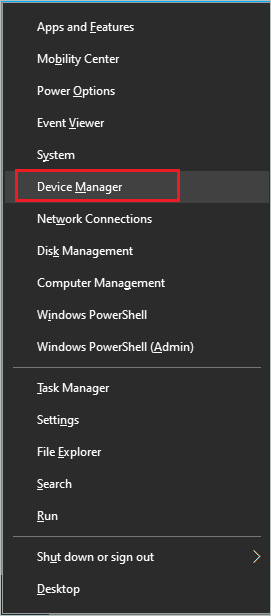
In the Device Manager window, expand Keyboards and right-click on the active keyboards device driver. Now, select Properties from the context menu.

In the Keyboard Properties window, go to the Power Management tab and check the checkbox next to ‘Allow this device to wake the computer.’
After changing the keyboard driver’s settings, you can apply the same changes to mouse drivers.
The mouse drivers are under Mice and other pointing devices.
Once all the changes are applied, put the computer in sleep mode again and check if the mouse or keyboard can wake it up again.
2. Check the Monitor Cable
If the monitor cable is loose or damaged, you won’t be able to see anything even if the PC wakes up. So you need to check the cable and monitor as well and ensure everything is working fine.
3. Update Windows Operating System
Windows update contains driver updates along with security patches and additional features. In addition, you can update Windows and check if that helps in waking up your computer from sleep.
Press Windows key + I to open the Settings app and go to the Update & Security section. Make sure you are in Windows Update, and then click on the Check for updates button.

If there are any new updates available, download and install them. You will need a stable Internet connection to download the update. We recommend downloading the optional update as well.
After the update, check if the PC could exit sleep mode quickly or not.
4. Tweak Power Settings
If the computer won’t wake up from sleep in Windows 10 even after updating Windows, you need to make some changes in the power setting. The right changes can fix the sleep mode changes for you.
Step 1: Search for Power Options in the Start menu and open Power & sleep settings from the search results.

Step 2: From the right side of the Settings app window, click on Additional power settings.
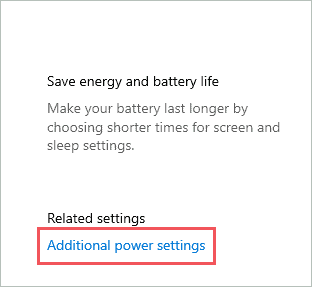
Step 3: In the Control Panel window, click on Change plan settings. If you have more than one power plan, you need to click on Change plan settings for the current power plan.

Step 4: Click on Change advanced power settings.
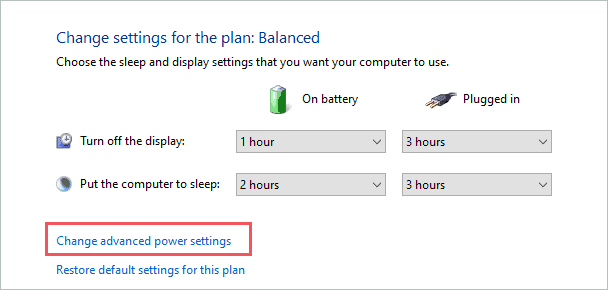
Step 5: When the Power Options dialog box opens, search for PCI Express and expand it.
Step 6: Expand Link State Power Management and then select Off for both On battery and Plugged in. Click on Apply and OK.
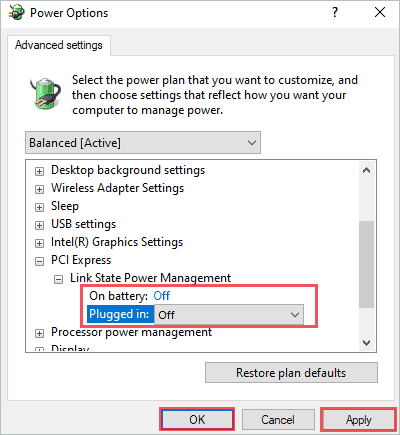
Step 7: Open Power Options again and expand Multimedia settings.
Step 8: Now, expand When sharing media and select Allow the computer to sleep for On battery and Plugged in. Click on Apply.
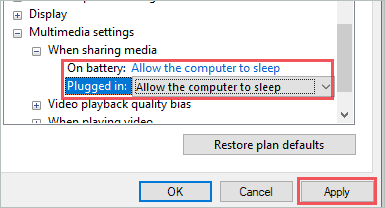
Step 9: In the Power Options, expand Sleep ➜ Allow hybrid sleep and select Off for On battery and Plugged in.
Step 10: In the Sleep section, expand Allow wake timers and select Enable for On battery and Plugged in.
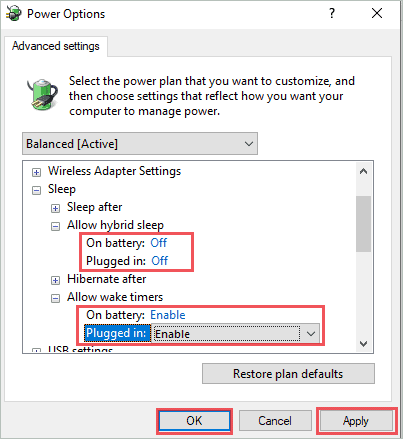
Now, close the Control Panel and Settings app. You need to restart your PC and try putting it in sleep mode again to check whether it wakes up or not.
5. Run the Power Troubleshooter
If, even after making the right changes, the computer won’t wake up from sleep in Windows 10, you need to run the Power troubleshooter. The troubleshooter will check for the issue and recommend changes to fix it.
Open the Settings app and go to Update & Security. Now, from the left panel, click on Troubleshoot. Next, click on the Additional troubleshooters link.

Next, search for Power in the troubleshooters list and click on it. You then need to click on Run the troubleshooter.

Let Windows scan for issues and suggest the changes that are needed to fix it. Once the troubleshooting suggestions are applied, check if the PC can wake up from the sleep mode on pressing keys or not.
6. Update Device Drivers
The computer won’t wake up from sleep in Windows 10 because of outdated, corrupt, or faulty drivers. You need to update the device drivers to avoid such issues. The drivers can be updated manually via Device Manager. Make sure you update the graphics driver along with the mouse and keyboard.
If you don’t wish to update the driver manually, you can use Driver Booster to do it for you. And if you decide to do it manually, download stable and correct driver software from a trusted source.
7. Disable Fast Startup Feature in Windows
The fast startup features can be one of the reasons the computer won’t wake up from sleep in Windows 10. Although it can enable computers to turn on quickly, it can lead to unwanted boot-related issues. You can disable fast startup to avoid sleep-related problems in Windows 10.
Step 1: Press Windows key + R to open Run and type powercfg.cpl there. Click OK to open Power Options in the Control Panel.

Step 2: Now, from the left menu, click on Choose what the power buttons do.
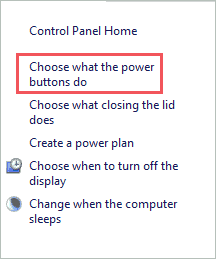
Step 3: Click on Change settings that are currently unavailable. If you are not logged in via an admin account, you have to enter credentials to access the settings.

Step 4: Now, uncheck the checkbox next to ‘Turn on fast startup (recommended)’ and click Save changes.

Once done, reboot your computer, and after the restart, put it in sleep mode. You will now be able to wake up the PC from sleep mode easily.
8. Check the Attached Devices
If you have attached any hardware peripherals that are not compatible, the computer won’t wake up from sleep in Windows 10. Therefore, you need to check the compatibility of all the connected devices, including the keyboard and mouse. The devices can prevent PCs from waking up.
Many users have complained about a bluetooth device like a bluetooth mouse or earphones preventing them from exiting sleep mode on Windows PC. So, make sure those are disconnected as well.
You can disconnect all the devices and reconnect them to check which device is causing issues. The process may take time, but you will be able to get rid of the incompatibility issues along with the sleep mode problem experienced by you.
9. Re-enable Hibernate Mode
The hibernate mode can also save a PC’s power consumption. However, it can at times cause issues while waking up the PC from sleep mode. You can disable and then enable the hibernation mode in Windows to resolve the issue.
Type cmd in the Start menu and click on Run as administrator for Command Prompt. This will open Command Prompt as administrator.
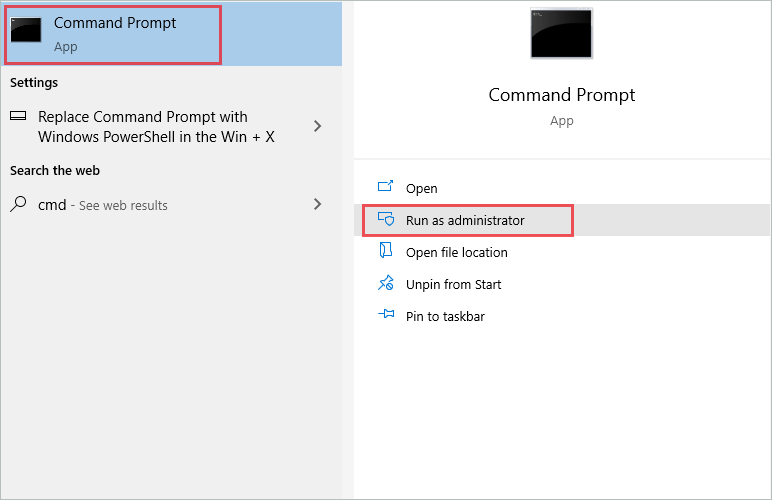
In the terminal prompt, type the below command and press Enter to execute it.
powercfg.exe /hibernate off This will disable the hibernate mode. You can then enable it again using the below command.
powercfg.exe /hibernate onNow, put the PC in sleep mode and check if it comes out of it when you move the mouse or use the keyboard.
10. Perform an SFC Scan
The corrupt system files can also cause issues while waking up the computer from sleep mode. You can use Windows System File Checker (SFC) utility to scan and repair damaged/corrupted system files on your PC.
Open Command Prompt with administrator privileges and execute sfc /scannow command to use the SFC utility.
Once the command is executed, your PC will be free from corrupt files and sleep issues.
11. Uninstall Recent Windows Update
If you started experiencing problems with sleep mode after updating Windows, you could uninstall the recent updates. This solution contradicts one of the solutions mentioned above, but it depends on the circumstances you started experiencing the issue. You need not worry about the uninstalled updates as they will get installed again with the next one.
Launch the Settings app on your PC and go to Update & Security. Next, click on View update history in the Windows Update section.
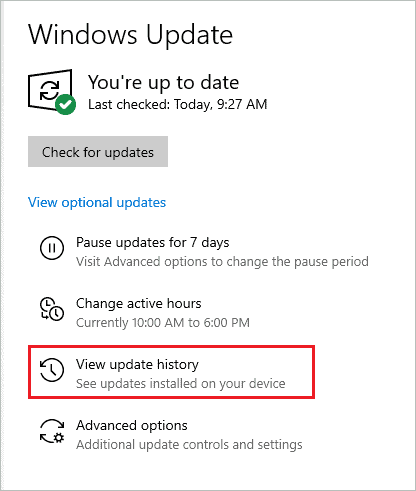
On the next screen, click on Uninstall updates.

Now, search for the most recent update by checking the Installed On column. Next, right-click on the recent update and select Uninstall.

Once the update is removed, restart your PC and check if you can resolve the computer won’t wake up from sleep in Windows 10 issue.
12. Reinstall the Device Drivers
If the computer won’t wake up from sleep in Windows 10, you can try reinstalling the drivers. Reinstalling the driver will fix the glitches in the driver and resolve the sleep mode problem. In addition, you can reinstall display drivers along with other drivers that are corrupt or faulty.
Open Device Manager on your computer and expand the Display adapters section. Next, right-click on the display driver and select Uninstall device.

Once the driver is uninstalled, go to the Action from the menu bar and click on Scan for hardware changes to reinstall the driver.
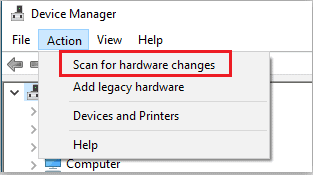
Alternatively, you can reboot the PC to install the drivers again. If there are any other driver issues, follow the above instructions to reinstall those drivers as well.
13. Make Change in Registry Editor
Making the right changes in the registry can help resolve many issues on Windows 10 computer. However, it is important to do it correctly; otherwise, some other problems can arise. Therefore, make sure you back up the registry before applying any changes.
Press Windows key + R to open the Run dialog box and type regedit there. Click OK to open the Registry Editor.

In the Registry Editor window, go to the path mentioned below.
HKEY_LOCAL_MACHINE\SYSTEM\CurrentControlSet\Control\PowerNow, search for CsEnabled in the right frame of the window. You need to double-click on it and change its Value data to 0. Click on OK to save the changes.
Close the Registry Editor and reboot your computer. Then, put the computer in sleep mode again and check if you can wake it up easily.
14. Restore the Power Plan to Default
The incorrect power settings make the computer won’t wake up from sleep in Windows 10. You can restore the settings to default.
Open the Control Panel and change the View by option to Large icons. Then, click on Power Options to open it.

Now, from the left pane, click on Change when the computer sleeps.
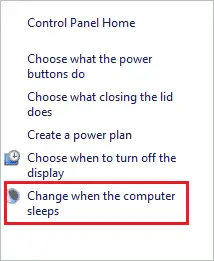
Next, click on Restore default settings for this plan.
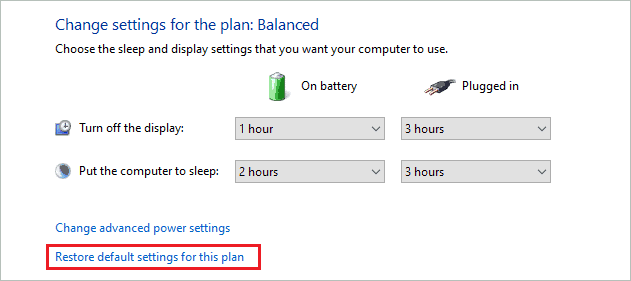
When asked ‘Are you sure you want to restore this plan’s settings default settings,’ click on Yes to confirm to restore the default setting.
Now, reboot the PC and check if the sleep mode issue is resolved or not.
15. Change BIOS Resume Settings
Many crucial settings are available in BIOS. Although this fix applies to old configurations, it can be helpful to some users using Windows 10 on old laptops.
You can enter BIOS using the instructions manual that came along with your PC and then search for Resume from S3 By USB Device. Although it can be different on your computer/laptop, you can search for similar settings.
Once found, set it to Enabled and save the changes. Make sure the changes are correctly made, as wrong change can lead to severe issues on your computer.
Restart the PC and check if you can wake up your computer from sleep mode.
16. Update BIOS
Another fix that can help you wake the PC from sleep mode is updating BIOS. The outdated BIOS can prevent computers from waking up from sleep in Windows 10. You can update BIOS by downloading the latest firmware from your manufacturer’s website.
However, make sure that you download the firmware from trusted sources; otherwise, the computer can be damaged beyond repair. If you have never updated BIOS on your own, you can get help from the field expert and get it done.
17. Perform a System Restore
If the computer won’t wake up from sleep in Windows 10, you need to perform a system restore. The system restore will revert the computer to a point where everything is working fine. It will uninstall the app and software installed after the restore point is created. Newly done settings will also be changed, but you will be able to use the sleep mode normally after that.
The personal files and folders won’t be deleted in the system restore process. As system restore resolves many minor and major errors in Windows, it will be fruitful in resolving sleep mode issues.
Conclusion
The breaks between work are necessary; however, shutting the system down and restarting it is not feasible. The sleep mode can help you save power and allow you to resume work in the state it was before. This mode works smoothly, but sometimes the computer won’t wake up from sleep mode in Windows 10.
The reason for that can be anything, right from a temporary bug to something severe with device drivers. However, it is easy to resolve this issue by making some changes in the device drivers, power settings, and registries. You can go through the above guide to know the detailed solutions to get rid of sleep mode issues.
FAQs
Why won't my PC wake up from sleep?
Your PC won’t wake up from sleep because of issues in display drivers, corrupt system files, incorrect power settings, outdated BIOS, a problem with keyboard or mouse, and damaged cable of external monitor.
How do you wake up a Windows 10 computer from sleep?
To wake up Windows 10 from sleep, move your mouse, press a key on your keyboard, or slightly press the physical power button.
Why put the PC in sleep mode?
You can save power when you put the PC in sleep mode. It can be really helpful when you wish to take a quick break and resume work without shutting your computer.







